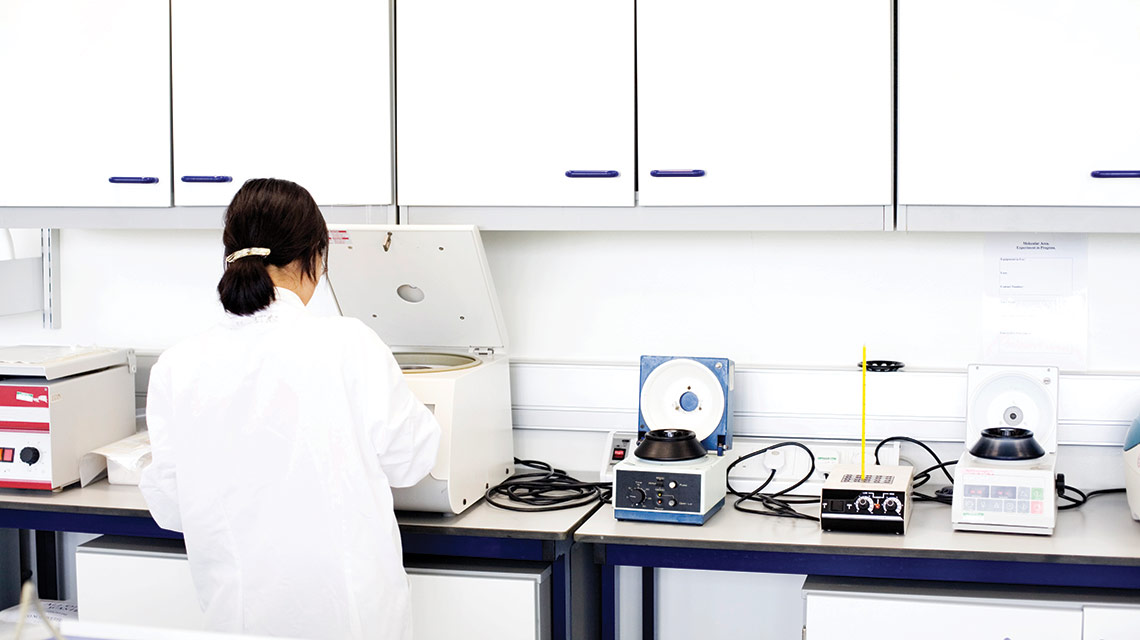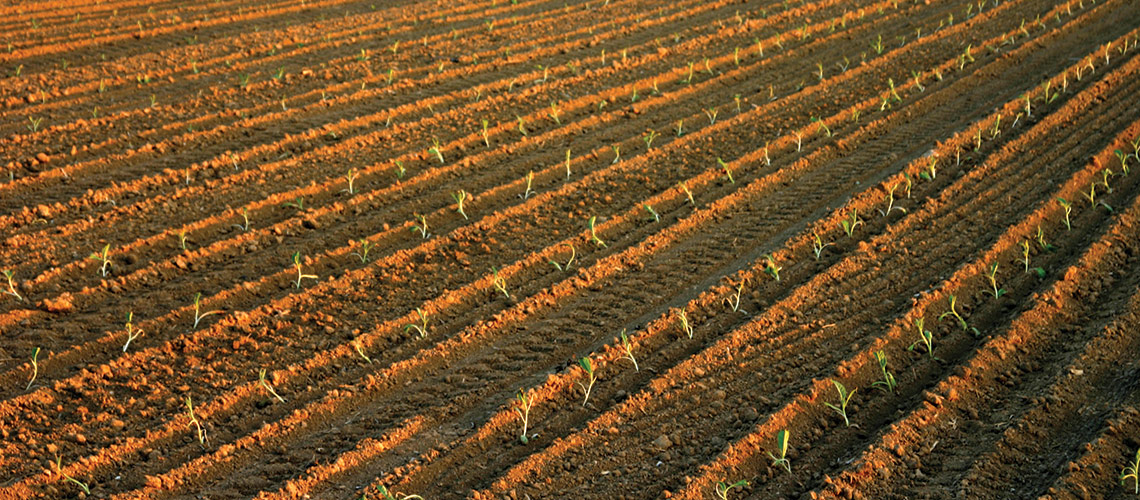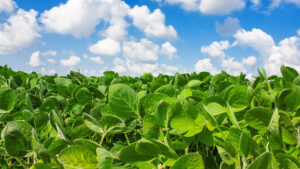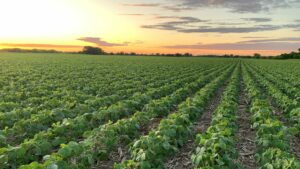Someday an entire cropping plan could be available on the seed.
Imagine a day when planting would require only one pass through the field. Fertility, disease control and even pest control could be part of a perfect seed package. With some disease resistance bred into the seed and a seed treatment that might contain more disease control, plus fertility and the ability of the seed to fix nutrients, growers would only need to ensure the seed is placed at the right depth in well-prepared soil. Fuel costs and field time would be saved and the rest would be up to the weather.
Sound fantastic? Well, most seed growers are aware of the many products that are in development or that are already available, but the challenge is sharing this knowledge with customers. An understanding of how the products work or how they might interact with each other is also a must. The technology offers countless possible combinations that seed treatment professionals might be challenged on how best to advise their customers.
In the early days of biological seed treatment research, the recognition that living organisms could have a beneficial affect on seed was exciting. But, reality set in when the challenge to keep the organisms alive long enough to get them on the seed or in the ground became the next hurdle to overcome. Instructions on early packaging included avoiding temperature changes or minimizing shelf life. Scientists, however, have found ways to extend shelf life and ensure efficacy. Soon, the next generation of biological seed treatments will enter the marketplace and the options facing growers will expand. Fortunately, seed growers are well-placed to assist in the decision-making process.
The greatest challenge, according to a specialist in soil biology, is having biological and chemical seed treatments work together and be a part of the same package. Manas Banerjee, president and CEO of Xite Bio, says his company has a bacterial product that fixes phosphorus and makes it available to the plant.
The bacteria exist in nature, but we work to isolate the most efficient and preserve the trait, Banerjee explains. We look for compatible formulations that can be used with conventional seed treatments. The challenge is keeping the biological products alive. If they are not compatible with a chemical seed treatment, they will die and the value is lost.
In addition to the use of biological seed treatments to fix nutrients, there is also the option of putting the nutrition on the seed along with disease management products. This option is particularly interesting in cases where the seed cannot access the needed nutrition.
Delivery Mechanism
“The whole idea of biological seed treatments is the ability for us to carry technology on the seed and the technology is improving every year,” states Robert Saik, CEO of Agri-Trend. “We envision the ability to layer different technology on the seed starting with nutrition.”
Traditionally, seed treatments have been chemical based and coated on the seed as a pesticide, insecticide or herbicide. But, biological treatments make it possible to add other growth assistants, such as Banerjee’s Rhizobium-fixing bacteria, or nutrients.
“The whole idea of biological seed treatments is the ability for us to carry technology on the seed and the technology is improving every year.”
— Robert Saik
However, the shelf life of biological products makes it difficult for seed treatment plants to pre-treat seed. Saik says the solution is for growers to treat the seed themselves in the field using equipment designed to apply the treatment as the seed is being placed in the ground. Sadly, he says, the equipment industry is behind in developing the needed tools to make this possible. This keeps the ability to treat seed in the treatment industry, which in turn needs to learn how to manage the various treatments. This might require speed treating seed by putting the product on the seed while the grower is waiting so it can be taken directly to the field due to the small window of efficacy.
Biologicals are alive, which is the reason for part of this complexity, Saik explains. Products can cancel each other out if they are not compatible. However, Saik suggests that by layering products in polymers, this issue might be overcome. It would also mean that products could be targeted for slow release or early release.
Seed with polymer coatings could contain fertility, growth stimulators and disease control, Saik explains. The challenge will be for the farmer to know what is the best choice or combination for their operation. He suggests an agrologist could assist with choices. But, those in the seed treatment business are also well-placed to help growers make choices and to treat the seed, if needed.
Some biological products have been registered for foliar application, which allows for immediacy. However, a seed growth development specialist at Bayer CropScience says seed treatments are more effective because the product is placed on the seed where it is needed. These are live organisms and putting them on as a foliar spray opens them to challenges from weather so they don’t last as long when they are put on a leaf. Using the biological products as seed treatments puts them back in the soil, which is better, explains Krista Anderson. But, that can also pose a challenge because they will react with that soil even if they are going back into the same soil they came from.
Biological Complexity
Anderson says the idea of biological seed treatments is complex and the more she works in the field, the more she recognizes the complexity. Biological products are attractive and drawing interest because they are natural, but science is just learning how to harness them and put them where they are most beneficial.
Banerjee says the adaptability of biological products can be an advantage. Because biologicals are alive, they can change and adapt to their environment, he explains. Chemical products do not adapt and this can lead to resistance developing and the need to have several chemistries available to maintain efficacy.
Researchers agree that chemical products can be much more costly to develop and they can stay in the soil posing problems for future crops. Biological seed treatments are much more cost effective to develop and, once identified, there is no need to keep searching for new chemistries. Biological products are attractive from an environmental standpoint as well.
Saik sees a future of integrated technology and the ability for growers to customize their seed treatments for their needs. Integrating seed treatment technology with precision agriculture with on-site seed treatment is the future, he suggests.
For example, a grower could put zinc on the seed and that treated seed could be planted in the exact area where zinc is lacking in the soil. In addition, the seed could be coated with disease suppression technology prior to being placed in the ground, but as it is being seeded, time sensitive biological products that encourage growth or fertility could be applied to the seed with the machinery. In short, mechanical and scientific technology could work together to get the crop off to the best start.
The return on the use of these products is tough to predict because they will show more efficacy in adverse conditions, Saik explains. If growing conditions are good, the benefits are not as visible. However, seed treatments do offer insurance against unexpected crop challenges and the biological treatments that are currently available or nearing registration tend to be useful bacteria that enhance crop production.
Consistency Counts
Anderson says layering multiple products and ensuring efficacy might be the future of biological seed treatments, but the industry is a long way from reaching that goal.
“We need to improve the consistency of the products and we need to prove the return on investment for growers,” she admits. Chemical products have a much higher consistency and effectiveness. She adds there are so many variables with biological products from ensuring they will be effective when seeded into colder soils to how they will function when in contact with other products. From a commercial handling perspective, she says, shelf life needs to be improved because treating seed for the large number of acres requires advance work to meet the demands of a shorter growing season as you move further north.
“There are many complexities, but biologicals have a solid future as seed treatments because they have the ability to colonize and grow with the plant.”
— Krista Anderson
If the variables are controlled, the application of biological seed treatments can greatly improve yield, whether they are suppressing disease or fixing nitrogen. Banerjee says his company’s product, SoyRhizo can increase soybean yields by up to nine bushels per acre. Most companies producing biological seed treatments make similar claims of increased yields and have the research to prove it. Therefore, seed retailers who treat seed as part of their service can back up their claims of the value of all seed treatment products with solid research.
The challenge facing the industry is knowing how the products — biologicals and chemicals — interact with each other and what each product is designed to do. As Saik suggests, the future of seed treatments might be a layering of products where each will provide an important aspect of crop production. The culmination of the layering will be improved yields and healthier crops, which, in turn, will improve bottom lines and make the crop more marketable.
Biological seed treatments are available for most crops and the focus of current research is to isolate bacteria or natural compounds that work with specific crops. There is also the possibility of using seed treatments on crops that will also leave healthier residue to benefit the following crop.
Growers do this now by planting soybeans to fix nitrogen in the year before they seed wheat. Some current biological seed treatments assist the soybeans to fix the nitrogen, but what if there was a treatment that could also hold soluble products in the soil for the next crop?
When biological research was first talked about 20 or so years ago, it seemed like something out of science fiction. Now, years later, the products are available and more will be available as the research is completed.
“I foresee the questions of efficacy, shelf life and compatibility being asked for decades,” Anderson says. “There are many complexities, but biologicals have a solid future as seed treatments because they have the ability to colonize and grow with the plant. I see so much positive potential, but it is going to take time. These products will be a critical component of integrated pest management systems in the future.”
The elephant in the field with all products that enhance crop health and growth, is the cost. Anderson says: “We have the ability to put some very advanced technology on the seed, but this could cost more. Is the cost going to be balanced by the end result?”
The ability to isolate biological soil and crop enhancements is only the beginning because they need to have a reasonable shelf life and not be destroyed by other products or environmental issues. The cost of adding multiple products to the seed, while beneficial to crop production, may not be feasible if the rate of return does not justify that cost.
For seed retailers, the possibilities might seem overwhelming. For innovators, the technology offers an opportunity to be leaders and to assist growers to get the best products to suit their needs and operations. It might also require learning new ways of applying the products and, like any tank-mix option, learning which can work together safely and capably and are cost effective. There is also the added bonus of reassuring the end-user, the consumer, that more and more natural products are being used to grow the food we eat.

















